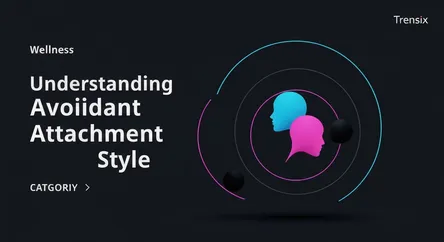Wellness
Understanding Avoidant Attachment Style

An explainer on the avoidant attachment style, its impact on relationships, and why people develop this pattern of avoiding emotional closeness.
What is it?
Avoidant attachment is an insecure attachment style where individuals subconsciously avoid emotional intimacy and closeness. Also known as dismissive-avoidant attachment, people with this style often pride themselves on their independence and self-sufficiency, finding it difficult to rely on others or have others rely on them. This pattern typically develops in early childhood as a response to caregivers who were emotionally unavailable or dismissive of the child's needs. As a result, the child learns to suppress their emotions and needs for connection to protect themselves from disappointment or rejection.
Why is it trending?
The concept is gaining traction as more people explore psychology and attachment theory to understand their relationship patterns and those of their partners. With a growing emphasis on mental health and self-awareness, many are identifying these behaviors in themselves or others to improve their connections. This awareness is driving conversations about how early life experiences shape adult relationships, making "avoidant attachment" a popular term for describing emotional distance and fear of commitment.
How does it affect people?
This attachment style significantly impacts relationships. Individuals often struggle to form deep, meaningful connections and may sabotage relationships as they become more intimate. They can appear distant, emotionally unavailable, and uncomfortable with expressing feelings, which can leave their partners feeling lonely and rejected. A person with an avoidant style might withdraw during conflict, prioritize their freedom over partnership, and end relationships prematurely to avoid vulnerability. This behavior is a defense mechanism, not a lack of desire for love, but it creates a cycle of temporary or unfulfilling relationships.